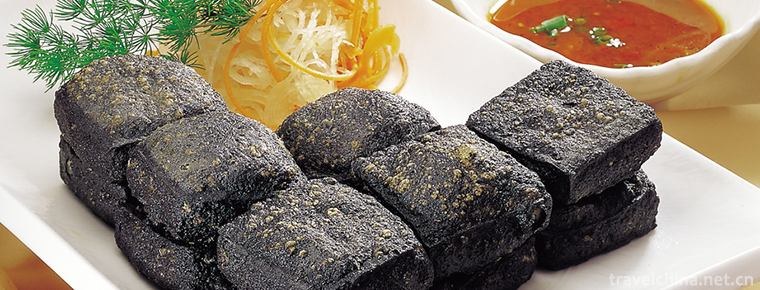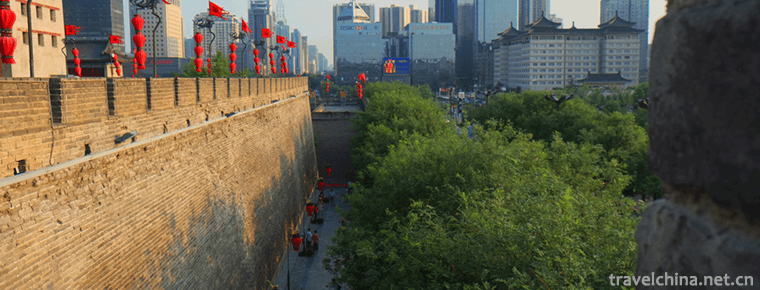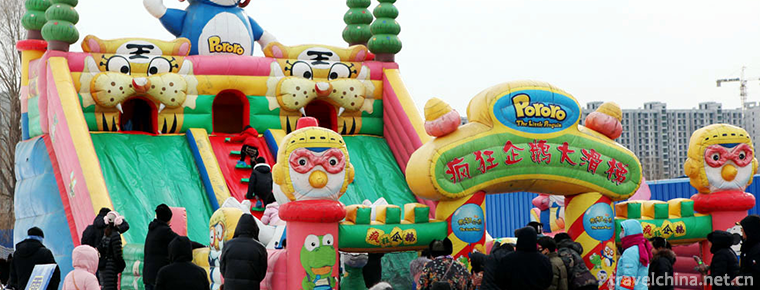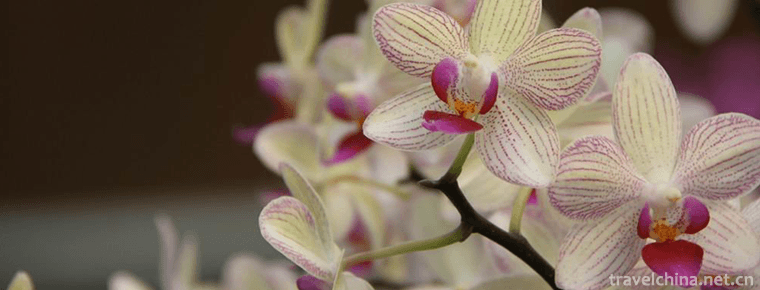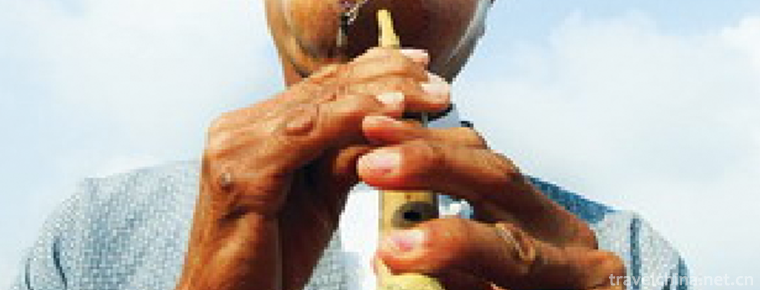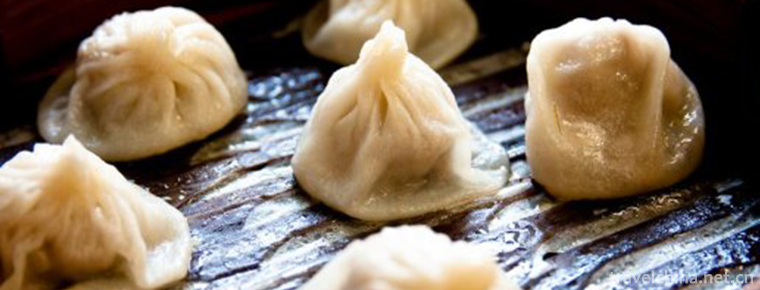Western Royal Tombs of the Qing Dynasty
Western Royal Tombs of the Qing Dynasty
Xiling Tomb of Qing Dynasty is located at the foot of Yongning Mountain, 15 kilometers west of Yixian Town, Baoding City, Hebei Province, more than 120 kilometers away from Beijing. The Western Tomb of the Qing Dynasty is the site of the tombs of four emperors since Yongzheng in the Qing Dynasty. It was built in the eighth year of Yongzheng (1730).
There are 14 Mausoleums in the Western Tombs of the Qing Dynasty, including Tailing in Yongzheng, Changling in Jiaqing, Muling in Daoguang and Chongling in Guangxu, and three Hou Mausoleums. In addition, there are 14 mausoleums, including Huaiwang Mausoleum, Princess Mausoleum, Ago Mausoleum and Wang Ye Mausoleum. Its architectural form embodies the feudal rules and regulations. Yellow glazed tiles are used for the top of Imperial Mausoleums and hind mausoleums, while green glazed tiles or grey cloth tiles are used for the top of imperial concubines, princesses and Royal palaces. The area of Xiling in Qing Dynasty is more than 800 square kilometers. There are more than 1000 palace buildings and more than 100 ancient buildings and sculptures in the mausoleum area.
In 1961, the Qingxi Mausoleum was listed in the first batch of national key cultural relics protection units. In November 2000, the Qingxi Mausoleum was listed as the World Cultural Heritage and World Heritage List by the 24th World Heritage Committee. In January 2001, it was ranked as the first batch of national 4A-level scenic spots.
Historical evolution
Construction period
The Western Tomb of the Qing Dynasty was built in Yongzheng eight years (1730). In the eighth year of Yongzheng (1730), Emperor Yongzheng chose it as the mausoleum site. Yongzheng's mausoleum site was originally chosen at Chaoyang Mountain, Jiufeng, Dongling, Qing Dynasty, but he believed that "although the scale is large and the shape is not complete, the soil in the cave with sand and gravel is not available", so he abandoned the original site and ordered another "auspicious land for all years". Those who chose the site of the tomb said that the foothills of Yongning Mountain in Yixian County are "a place where the heavens and the earth gather together, where Yin and Yang converge, and where the sand and water of Longxue are beautiful. The situation is reasonable, Zhu Jixian is ready." Emperor Yongzheng was very happy after his performance. He also thought that the mountain water method here was clear and orderly, and that Xun was the land of Shangji. Since then, the emperors of the Qing Dynasty were separated and buried in two Mausoleums in East and west of Zunhua and Yixian.
In the fourth year of Qianlong (1739), Emperor Qianlong chose the cemetery for his son Yonglian (Prince Duanhui), and later abandoned it.
In the first year of Jiaqing (1796), Emperor Jiaqing followed the order of Yizhao Mu of Emperor Qianlong, his father, to build Mausoleums in the boundary of Dongling and Xiling. In accordance with the mausoleums chosen by Emperor Qianlong, the construction began in the year of his inauguration and was completed in the eighth year of Jiaqing (1803). This is the second imperial mausoleum built in the Western Tomb of the Qing Dynasty. At the same time, the garden beds of Changling imperial concubines of 17 emperors of Jiaqing were built and completed. In June of the thirteenth year of Jiaqing (1808), Yongxu, the guardian Minister of Xiling, reported that Emperor Jiaqing had found the quality problems of Changling Project. Because of the heavy rain in succession months, several buildings leaked. Emperor Jiaqing sent people to inspect immediately. After inspection, it was found that almost all the buildings in Changling had engineering quality problems. Emperor Jiaqing then carried out a two-year overhaul.
Decline period
From the twelfth year of Daoguang (1832) to the sixteenth year of Daoguang (1836), Emperor Daoguang built the Muling. Muling was built under the chairmanship of Muzhanga, a minister who was in great favor for a time. Muling chose Longquanyu in Gaoping District, drawing lessons from the seepage of Baohuayu Mausoleum in Dongling.
Xianfeng Emperor originally chose Jinlongyu and Longquanyu in the Western Tombs of the Qing Dynasty, but later chose Longquanyu in the Dongling Tomb. Empress Dowager Cixi chose the Jinlong Valley of the Western Tomb of the Qing Dynasty and the Shuangshan Valley of the Eastern Tomb of the Qing Dynasty for Emperor Tongzhi's Mausoleum. But later, Empress Cixi destroyed the Zhaomu system established by Emperor Qianlong and chose the tomb of Emperor Tongzhi in Shuangshan Valley of the Eastern Tomb of the Qing Dynasty
The Chongling Tomb of the Qing Dynasty was built in 1909 in the first year of Xuantong and completed in 1915 in the fourth year of the Republic of China. In 1938, the Chongling Underground Palace was stolen.
After the founding of PRC
After the founding of the People's Republic of China and the establishment of the Xiling Cultural Relics Preservation Institute in 1954, the principle of "not changing the original state" (i.e. preserving the authenticity of cultural relics as best as possible) was strictly observed in the daily maintenance and protection. Based on the conclusive documents and archives, the design, materials, technology and layout of the Preservation Institute maintained the historical authenticity, without adding a building, and from the main body construction. Architecture, timber structure, regulations, even doors, windows, panes, fans, etc. remained intact, becoming a model for repairing and visiting Qing Dynasty mausoleums. While protecting the main body of the building of the Western Tomb of Qing Dynasty, it also pays attention to the protection of its surrounding environment. Basically, it has not changed its environmental relationship. The complete preservation of more than 15,000 ancient pines and Berlin is a true portrayal of the environmental features of the Western Tomb of Qing Dynasty. The Western Tomb of the Qing Dynasty was listed by the State Council as the first batch of national key cultural relics protection units in 1961, and was officially opened to the outside world in 1980. In November 2000, the Western Tomb of the Qing Dynasty and the Eastern Tomb of the Qing Dynasty were listed as world cultural heritage by the 24th World Heritage Committee.
From the first Tailing Tomb built in Yongzheng eight years (1730) to the Chongling Tomb built in Guangxu four years (1915) in the Republic of China, the Western Tomb of the Qing Dynasty built four emperors'mausoleums, three emperors' mausoleums, seven imperial dukes, princesses and imperial concubines'gardens, buried four emperors of Yongzheng, Jiaqing, Daoguang and Guangxu, nine empresses, and a total of 80 princesses and princesses. The building area is more than 50,000 square meters. There are more than 1,000 palaces and more than 100 stone carvings and buildings.
geographical environment
The Western Tombs of the Qing Dynasty lie between 115 13'- 115 25', and 39 20'- 39 25'. Yongning Mountain, 15 kilometers west of Yixian Town, Baoding City, Hebei Province, is more than 120 kilometers away from Beijing.
The Qingxi Tomb is a hilly land with high northwest and low southeast in the region. It is the birthplace of the Beiyishui River. Its highest elevation is 1121m. Surrounding by mountains and mountains, the old city of Yanxia in the East more than 2300 years ago, looking west at Bauhingguan, pillow Yongning Mountain in the north, now arrives at the Yishui River.
architectural composition
Overall scale
The Western Tomb of Qing Dynasty has a large-scale and complete system of ancient buildings. In the mausoleum area of 200 square miles and 800 square kilometers, there is the largest artificial ancient pine forest in North China. Since the founding of the mausoleum, the Qing Dynasty has planted tens of thousands of pine trees under the Yongning Mountains, along the Yishui River and inside and outside the mausoleum. There are 15,000 ancient pine trees and more than 200,000 young pine trees.
There are more than 1000 palace buildings and more than 100 ancient buildings and sculptures in the mausoleum area. Each mausoleum strictly follows the Qing Dynasty imperial mausoleum building system. Yellow glazed tiles are used to cover the mausoleum of the emperor, empress and princess. Green glazed tiles cover the beds of concubines, princesses and Ago gardens. These different architectural forms show different landscapes and styles.
There are 14 Mausoleums in the Western Mausoleum of the Qing Dynasty, including 4 imperial mausoleums: Tailing (Yongzheng Emperor), Changling (Jiaqing Emperor), Muling (Daoguang Emperor), Chongling (Guangxu Emperor); 3 empress mausoleums: Taidong Mausoleum, Changxi Mausoleum, Mudong Mausoleum; 3 imperial concubines mausoleums and 4 other mausoleums (Huai Wang Mausoleum, Princess Mausoleum, Ago Mausoleum, Wang Ye Mausoleum, etc.) There were four emperors, nine queens, 56 concubines and wives, as well as more than 70 princes and princesses.
Cemetery layout
In the mausoleum area of Western Qing Dynasty, each cemetery shared Zushan, Shipaifang and Dahongmen, surrounded by geomantic fencing walls, fire channels and boundary piles. The layout of the mausoleum has its own direction. The empress mausoleum and the imperial concubine's garden are centered around the emperor's Mausoleum of the current dynasty. They are divided into two parts, which reflect the affiliated relationship and show the meaning of accompanying the burial. The Shinto of each emperor's mausoleum is connected with the Shinto of the main mausoleum, and the Shinto of the later mausoleum is connected with the Shinto of the emperor's Mausoleum of this dynasty, forming a branch-like Shinto network. These characteristics were not found in the Imperial Mausoleums of previous dynasties before the Qing Dynasty. The whole mausoleum area of Western Qing Dynasty is centered on the Tailing Mausoleum of Emperor Yongzheng of Emperor Qing Shizong. The Changling Mausoleum of Renzong of Qing Dynasty and the Muling Mausoleum of Xuanzong of Qing Dynasty are distributed in the west, and the Chongling Mausoleum of Emperor Dezong of Qing Dynasty, the Tomb of Puyi, the Tomb
Tourism information
Admission ticket
The price of joint tickets in scenic spots is 122 yuan per ticket in peak season, 62 yuan per ticket for the elderly over 60 years old, and the national labor model; among them, 45 yuan per ticket in peak season and 35 yuan per ticket in off season for Tailing (including Dahongmen); 45 yuan per ticket in peak season for Chongling (including Chongfei Ling) and 35 yuan per ticket in off season for Changling (including Changxi Ling); 45 yuan per ticket in peak season and 35 yuan per ticket in off season for Changling (including Changxi Ling).
The new ticket price of Taidongling is 20 yuan per ticket and that of Muling is 10 yuan per ticket.
The off-peak season is divided into the off-season from November 1 to March 31, and the peak season from April 1 to October 31. Since October 1, 2018, the peak season of ticket price adjustment is 108 yuan.
Self driving
The scenic spots of Xiling Tomb in Qing Dynasty are scattered, tourists are relatively few, and the interior road surface conditions are good, which is suitable for self-driving tour. Beijing-oriented Self-driving Tourists can travel southward along the Beijing-Shijiazhuang Expressway. After passing Zhuozhou, they can continue southward. See the sign of Beijing-Kunming Expressway, they can travel westward to the Zhuozhou direction of Shanglong-Zhuozhou Expressway. They can travel westward to the exit of Qingxiling Expressway of Zhangshi Expressway (about 40 kilometers). Then they can turn right one kilometer to Dahongmen of Qingxiling. The journey is about 90 minutes.
Best tourism
Best month of travel: April to October every year
Travel Points: Spring, Summer and Autumn are the best time to visit the Western Tombs of the Qing Dynasty.
Opening Hours
8:00-18:00











-
Huizhou stinky tofu
The common name of stinky tofu in Huizhou is "Big Dumb and stinky", which is a characteristic traditional snack in Huizhou, Anhui Province..
Views: 188 Time 2018-11-27 -
Xian City Wall Scenic Area
Xi'an City Wall Scenic Area and National AAAAA Tourist Scenic Area are the four-in-one Scenic Area around the city with the theme of the ancient city wall of Xi'an, including the moat.
Views: 135 Time 2018-12-12 -
Seven Stars Scenic Spot
Seven Stars Scenic Spot/Qixing Scenic Spot is located on the East Bank of Lijiang River in Guilin City, along Xiaodong River, a tributary of Lijiang River, 1.5 kilometers away from the city center..
Views: 112 Time 2018-12-17 -
Crab Island
Crab Island Green Eco-Resort is based on agriculture, characterized by villages, with environmental protection, green, organic and healthy as the solid connotation of tourism and vacation. .
Views: 126 Time 2019-02-25 -
Yanling National Flower and Tree Expo Park
Yanling National Flower and Tree Expo Park (Yanling Flower and Tree Expo Park) is located in the eastern part of Xuchang City, Henan Province..
Views: 108 Time 2019-02-28 -
Bouyei Leyou
Le You and Le Lang are Buyi oboe gas song instruments. They resemble suona, bowl-less, insect whistle playing, bright and sweet timbre. It can be used for Solo or singing accompaniment.
Views: 165 Time 2019-04-04 -
Hubei storytelling
The evaluation of books in Hubei Province is a traditional art of rap and singing in Hubei Province. Popular in northern China, as an independent variety of storytelling,.
Views: 172 Time 2019-05-03 -
Traditional Cuisine Skills of Shanghai Bengang Cuisine
Benbang cuisine is a nickname for Shanghai cuisine and an important school of Han traditional catering culture in Jiangnan area. The so-called Ben Gang is local. It is characterized by thick red sauce.
Views: 131 Time 2019-06-13 -
Legend of Su Dongpo
The legend of Su Dongpo is a group of traditional folklore stories evolved from the story of Su Shi, a great writer in the Northern Song Dynasty..
Views: 153 Time 2019-06-16 -
Chengdu Sport University
Chengdu Institute of Physical Education is one of the six institutes directly under the former State General Administration of Sports. It is now a co-established Institute in Sichuan Province with the.
Views: 213 Time 2019-08-31 -
Population of Deyang
By the end of 2018, the total number of households in Deyang was 1 million 575 thousand, and the total registered residence population was 3 million 870 thousand. Among them, there were 1 million 242 thousand urban residents and 2 million 629 thousand rural population.
Views: 318 Time 2020-12-14

